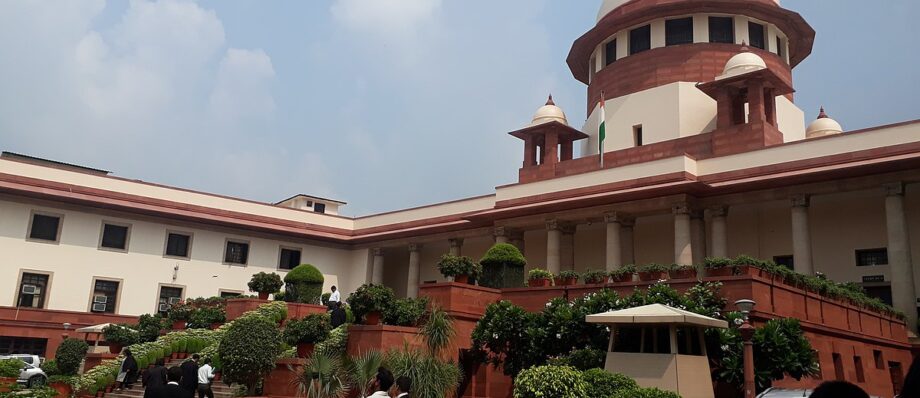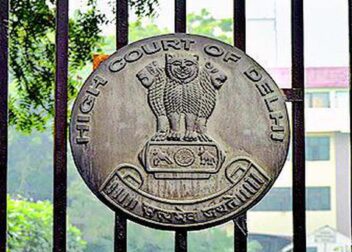Table of Contents
New Delhi — In a historic move to address the persistent issue of child marriage in India, the Supreme Court has issued a series of powerful guidelines aimed at prioritizing prevention, protection, and community awareness over mere penalization. The ruling comes at a time when child marriage remains a harsh reality for millions, particularly in rural parts of the country, despite a legal ban in place for nearly two decades.
A bench led by Chief Justice of India DY Chandrachud, along with Justices DB Parala and Manoj Mishra, issued the new set of directions, signaling a shift in India’s approach to tackling child marriage. The Court’s ruling emphasizes the importance of preventing child marriages before they happen, providing protection for victims, and then pursuing legal penalties against offenders. This multi-pronged approach seeks to address the root causes of the issue and create lasting social change, rather than relying solely on punitive measures.
The Problem: A Persistent Social and Legal Challenge
Child marriage remains one of India’s most pressing issues, affecting millions of girls and boys, often before they reach adulthood. According to the National Family Health Survey, approximately 23% of women aged 20-24 were married before the age of 18, representing a staggering number of young girls whose lives are affected by early marriage.
In addition to stripping away childhoods, child marriages lead to devastating consequences, including a lack of education, severe health risks, domestic violence, and a perpetuation of gender inequality. Despite India’s legal framework—such as the Prohibition of Child Marriage Act (PCMA) of 2006—child marriage continues to thrive due to lack of enforcement and awareness, particularly in rural communities.
The Legal Framework: PCMA and Its Limitations
The Prohibition of Child Marriage Act of 2006 is India’s primary legislation prohibiting child marriages. It sets the legal age of marriage at 18 for girls and 21 for boys. However, a critical distinction in the law is that while child marriages are deemed illegal, they are not automatically void. Instead, such marriages are considered “voidable,” meaning they can be annulled only if the minor involved chooses to do so once they reach the age of majority.
The PCMA also includes provisions to penalize adults who facilitate child marriages, such as parents or guardians who arrange a marriage for a child. Despite these provisions, the Supreme Court argued that legal bans and penalties alone are not enough to curb child marriage. Enforcement gaps and insufficient community education are key barriers to achieving lasting change.
Supreme Court’s New Guidelines: A Holistic Approach
In response to these challenges, the Supreme Court’s guidelines focus on creating a more comprehensive strategy to address child marriage. The Court stressed the importance of prevention, beginning with community-based efforts to change mindsets about marriage age, and ending with penalties for those who facilitate or engage in child marriages. Some of the most significant measures include:
1. Mandatory Marriage Registration: The Court has mandated the immediate registration of any marriage involving a child, including detailed information about both parties and their guardians. This will create a transparent system to track child marriages and allow authorities to act swiftly to prevent them.
2. Educational Awareness: Schools have been instructed to include modules in their curriculum that educate students, particularly girls, about the negative effects of child marriage, their legal rights, and the importance of delaying marriage. Teachers are also required to report any cases of child marriage they become aware of, helping to establish schools as key players in preventing child marriages.
3. Comprehensive Sexuality Education: The Court directed that all states and union territories include comprehensive sexuality education in schools, covering topics such as gender equality, reproductive rights, and the physical and mental health risks of child marriage. This education must be age-appropriate and culturally sensitive, empowering children to make informed decisions about their futures.
4. Community Engagement and Outreach: The guidelines call for increased grassroots efforts to raise awareness about child marriage, especially in rural areas. Local governing bodies, like panchayats (village councils), are encouraged to actively promote and monitor child marriage-free villages. This initiative would involve educating parents, community leaders, and religious figures to shift their attitudes toward early marriage and advocate for the protection of children’s rights.
5. Strengthened Enforcement: The Court has also emphasized the need for local authorities to take a more proactive role in preventing child marriages. This includes regular inspections, surveillance, and follow-ups on suspected child marriages. Additionally, law enforcement and child welfare committees must be vigilant in taking swift action against those who facilitate such marriages.
6. Support Structures for Victims: Children who are victims of child marriage should have access to counseling, legal aid, and rehabilitation services. The guidelines call for specialized police units to address child marriage cases and for the establishment of fast-track courts to expedite such cases.
7. Economic Support and Scholarships: The Court has encouraged the creation of financial support programs for families who delay marriage and keep their daughters in school. This includes scholarships for education, vocational training, and social welfare programs such as conditional cash transfers to families that commit to keeping their daughters in school and postponing marriage.
8. Awareness Campaigns and Helplines: Community outreach programs must promote awareness about helpline numbers like Childline (1098) and the Women’s Helpline (181) to ensure that children in distress can seek help without fear of retaliation. Healthcare providers will also be trained to address the specific risks that child brides face, ensuring that the health consequences of child marriage are given adequate attention.
The Role of Parliament: Addressing Child Betrothal
The Supreme Court also recommended that Parliament amend the PCMA to explicitly outlaw child betrothal, a practice where children are engaged to be married at an early age. Betrothal can lead to early marriages once the child reaches puberty, often without their consent. The Court highlighted that child betrothal infringes on the child’s autonomy and disrupts their right to a normal childhood, calling it a loophole that needs to be closed.
A New Era in Child Marriage Prevention
The Supreme Court’s ruling marks a critical step toward ending child marriage in India. By focusing on prevention, awareness, and community-based action rather than solely on penalties, the Court has laid out a framework that acknowledges the importance of social change in tackling this deeply ingrained issue.
While the guidelines themselves are a significant breakthrough, their success will depend on the active participation of governments, communities, schools, and individuals. Through widespread education, grassroots mobilization, and effective enforcement of the law, India can begin to break the cycle of child marriage and build a future where children are free to pursue their dreams and realize their full potential.
As the country moves forward with these new guidelines, the Supreme Court’s call for collective action echoes a wider message: Child marriage is not just a legal issue; it’s a societal issue that demands a united effort to create lasting change.
References
https://api.sci.gov.in/supremecourt/2017/36052/36052_2017_1_1501_56564_Judgement_18-Oct-2024.pdf



